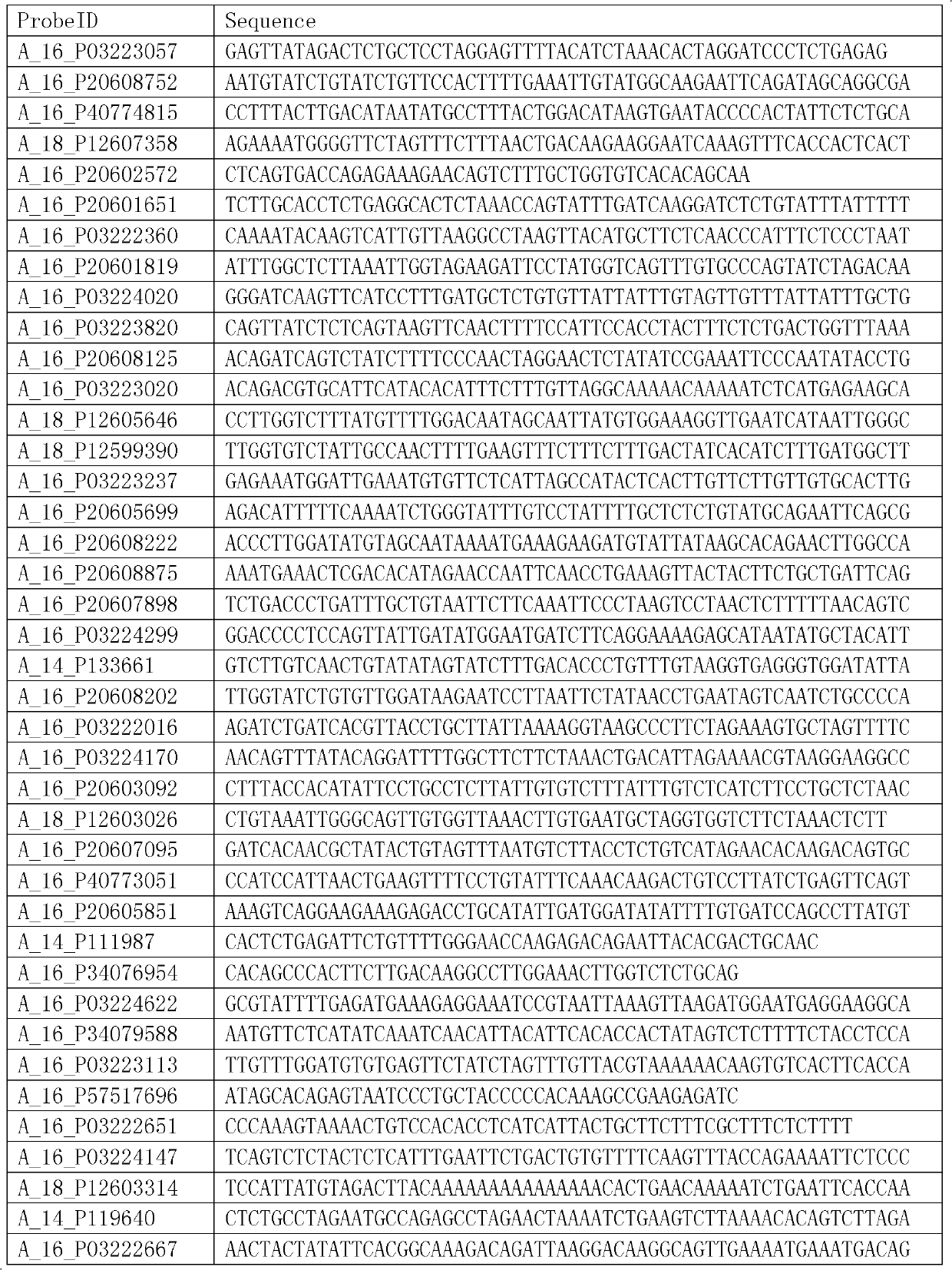Gene chip for detecting Smith-Magenis syndrome
A gene chip and syndrome technology, which is applied in the field of gene chip detection of Smith-Magenis syndrome, can solve the problems of low-cost Smith-Magenis syndrome gene mutation, etc., and achieve high repeatability, high detection specificity, short time effect
- Summary
- Abstract
- Description
- Claims
- Application Information
AI Technical Summary
Problems solved by technology
Method used
Image
Examples
Embodiment 1
[0024] Step 1, sample preparation
[0025] Adjust the temperature of the water bath to 37°C and 65°C, dissolve 10X Buffer C, vortex briefly and then centrifuge for a few seconds.
[0026] For each reaction, gDNA was added to an appropriate nuclease-free PCR tube and nuclease-free water was added to bring the reaction volume to 10.1 μL.
[0027] Prepare Digestion Master Mix on ice, and add the following reagents in sequence, as shown in Table 2;
[0028] Table 2
[0029]
[0030]
[0031] Add 2.9 μL enzyme digestion reaction solution into the gDNA reaction tube to make the volume reach 13 μL; mix it upside down; carry out PCR reaction, the reaction program is: run at 37°C for 2 hours, run at 65°C for 20 minutes; Transfer the reaction tube to ice, take 2 μL of digested gDNA, prepare 0.8% agarose gel, stain with SYBR Gold, and run electrophoresis to check whether the digestion is complete. Most of the above enzyme digestion products are 200bp-500bp in length.
[0032] S...
Embodiment 2
[0056] The gene chip for detecting Smith-Magenis syndrome of the present invention is used to detect and screen related populations. The results show that the diagnostic chip has simple operation steps, high detection specificity, and good stability; multiple tests have high repeatability; The time is short, from sample extraction to scan results can be completed within one working day.
[0057] The results of the above examples show that the gene chip for detecting Smith-Magenis syndrome of the present invention has simple operation steps, high detection specificity, good stability, short time and low cost, and can be quickly, low-cost, large-throughput and automated. Test for mutations in the Smith-Magenis syndrome gene.
PUM
 Login to View More
Login to View More Abstract
Description
Claims
Application Information
 Login to View More
Login to View More - R&D
- Intellectual Property
- Life Sciences
- Materials
- Tech Scout
- Unparalleled Data Quality
- Higher Quality Content
- 60% Fewer Hallucinations
Browse by: Latest US Patents, China's latest patents, Technical Efficacy Thesaurus, Application Domain, Technology Topic, Popular Technical Reports.
© 2025 PatSnap. All rights reserved.Legal|Privacy policy|Modern Slavery Act Transparency Statement|Sitemap|About US| Contact US: help@patsnap.com



